I generally plot places I want to eat first into my budget and map, and then work around from there on filling a place to stay (though in this case that was already determined by F’s work conference) and things to do. In this case, when I saw how much would be spent on my food budget, I decided for the activities between my meals I wanted to take advantage of free or cheap things to do. Here are some of the free things to do in Copenhagen I took advantage of.
The Little Mermaid
Yes, it’s a tourist trap that many visitors flock to, and I don’t think there’s a need to take any tour to go see it. Just read up a little bit on the statue by doing a little pre-research online – I take photos of pages or copy and paste to reference the information when I’m there so no need to carry any guidebooks. I also advise you, especially in this case, to set your expectations accordingly knowing the cons of a tourist attraction, be it whether there are long lines, no ac, or in this case it is after all just a small statue. Finally, and my biggest tip, go early. Most tourists, being on vacation, like to sleep in as it is part of relaxing during the trip. So I constantly beat this by going early.


This has the positive effect of not only avoiding people, but I get better photo shots where I don’t have to work around oblivious people and I even got a photo of myself with no other people in the background to prove I was there (I am terrible at selfies). For the Little Mermaid I got there around 8:45 am and there were only less then a handful of people there. Because it was a nice short walk from the Metro Østerport Station and I didn’t have to deal with many other people there, it was a worthwhile visit for me and also a nice way to burn off my daily buffet breakfast of breads and meats and cheeses at the hotel.

From the Little Mermaid, walk south through Langelinie Park (which is the closest public restroom) to check out Gefion Fountain, showing the story of the Norse goddess Gefion, who was told by the Swedish King Gylfe she could the territory she could manage to plow from Sweden in one night. She transformed her four sons into four bulls and let them plow so deeply that they lifted the land and dragged it into the sea, where it formed Zealand (the main island of Denmark, which is comprised of more then 400 islands. Copenhagen is on the island of Zealand).
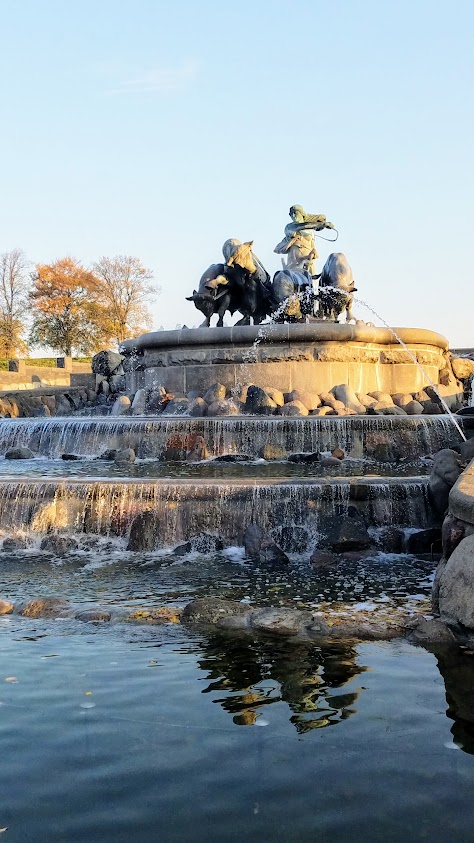
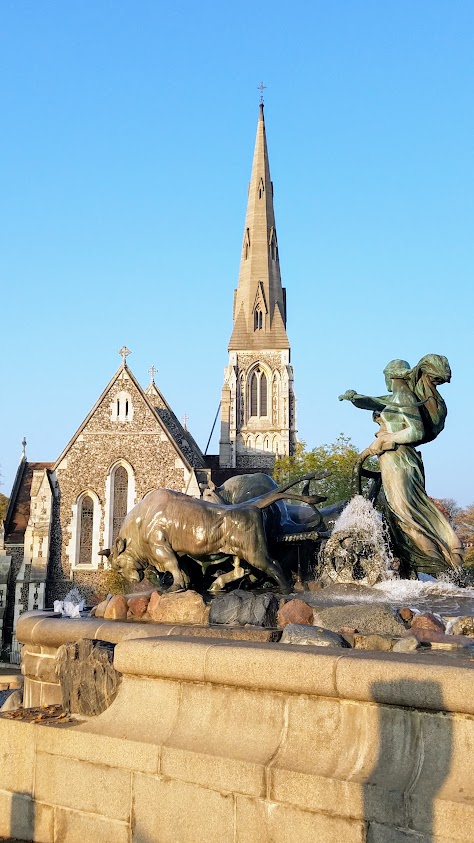
If you are interested there are also two museums I had bookmarked nearby but ultimately did not visit also within a short radius here: the Den Frie Museum of Contemporary Art and the Designmuseum Denmark, which showcases Danish design. Both have a small admission fee.
Amalienborg Palace
It is about a 1 mile walk from the The Little Mermaid to Amalienborg Palace. These four almost identical buildings were meant as residences for four wealthy families, but became the the winter residence of current Danish Royal Family since 1794 when Christiansborg Slot burned down.
There is a small admission fee to enter, and you can get a significant discount of more then half off admission if you bundle your admission with admission to Rosenborg Castle, which I think is the more interesting to see (price is 155 DKK, or about $24, rather then separate admissions of 110 and 105 DKK). Skip the lines by buying your admission online, though note Rosenborg has timed entry admission – I bought the earliest entry time at Rosenborg (10 am during my visit) on a different day.
The website for both offers detailed information you can look up room by room and match up with numbers on the various pieces in an exhibit. So if you want to look up who is depicted in one of the portraits in a room, you can! If you come at the right time, you may also witness the changing of the guard here. Looking at Amalienborg Palace in Copenhagen from the outside, seeing the Royal Plaza, and the guards, are all free. Fun trivia – supposedly that statue of Frederick V in the middle of the square, which took 30 years to complete, costs as much as the entire complex of buildings!
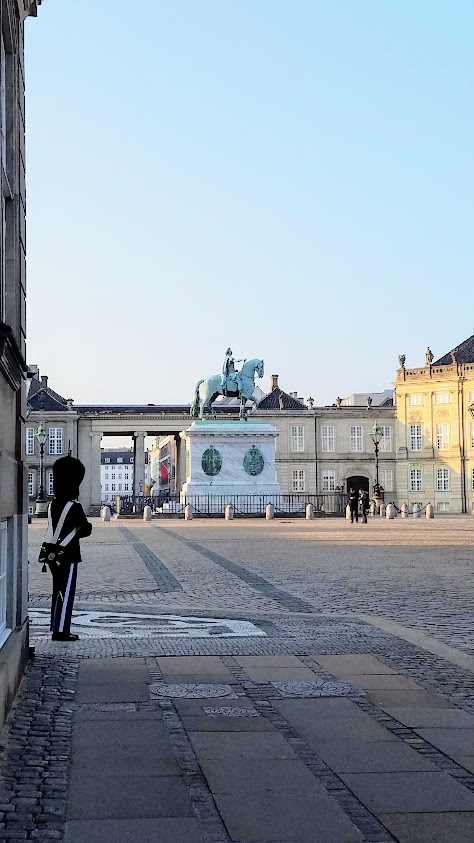


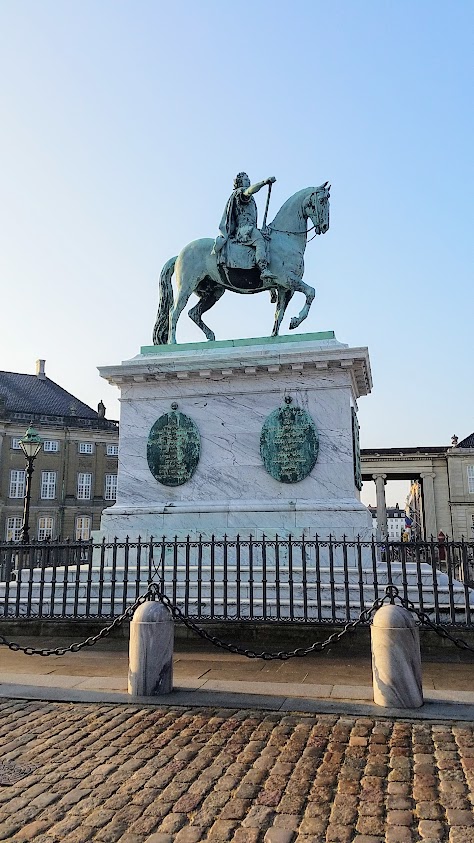
Because the royal family does live here only a small portion can be visited, and after I visited it on my combo admission, I didn’t think it was worth it, and the history displayed here doesn’t go back further then 150 years so it is more modern then Rosenborg’s Castle’s scope. To be fair, it’s probably hard to compete with the fun crazy stories of Denmark’s crazy King Christian IV.
My favorite parts were first, the studies which were just packed with so many family photos. Though perhaps if your family was known as the “the in-laws of Europe” because four of the children of Christian IX and Queen Louise ascended to the thrones of England, Greece, Russia and Denmark, maybe you would be super proud too of all your family tree branches.



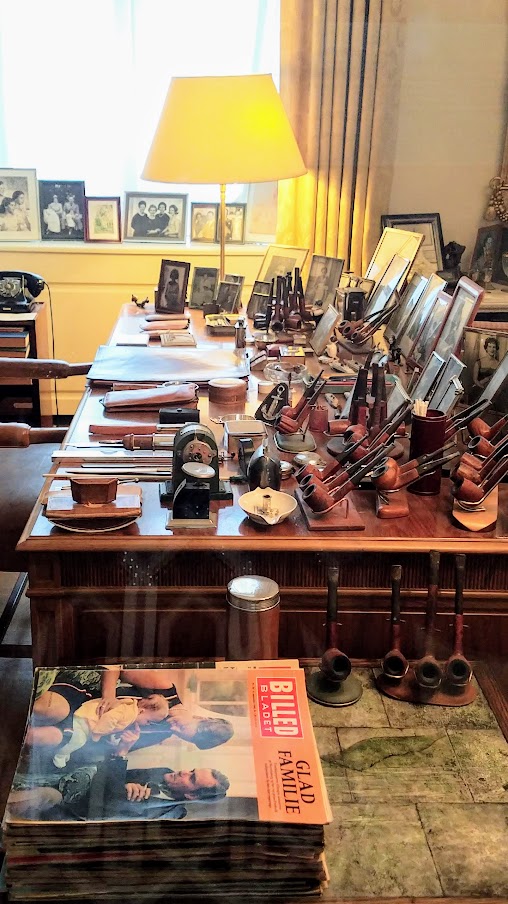
Also interesting to me were the super large and ornate five piece silver centerpieces. These are remnants from when dining changed from the French coursed style of servers bringing many courses that sat in the middle of the table that guests would help themselves to a Russian style where the servers held serving dishes and brought them to guests in a certain order, now leaving space in the middle of the table for centerpieces like these. I can’t imagine that instead of being to look across to other diners this is what you are looking at…
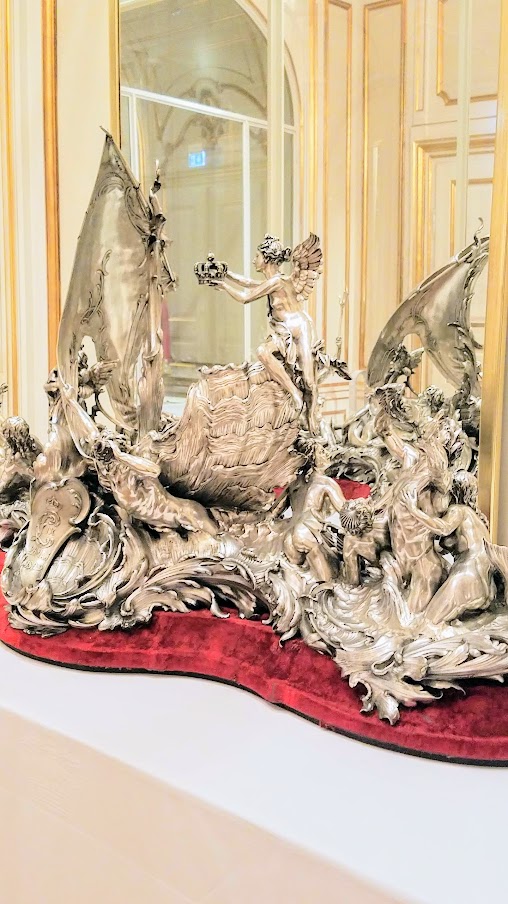
The other photo is what the setting looks like for the New Year’s Gala Banquet, where there are always four courses with paired wine served including a special Rosenborg wine from 1598 (!). Notice the porcelain plates and how the cutlery is served with reverse side up, both ideas of Prince Henrik (consort to the current queen Queen Margrethe II of Denmark) and how opulant the room is.

If you walk west a block or so from Amalienborg, if you’d like you can visit the Marble Church, also known as Frederik’s Church. One of the biggest dome churches in Europe, it was originally designed in 1740 but did not get completed and open until 1894, and instead of marble for financial reasons it was switched from using Norwegian marble to cheaper Danish marble. I only walked by because there is a small cash only admission fee, but besides the characteristic copper green dome the church is known for its view from the dome if you enter. I didn’t need the view because I had another set of stairs in mind which I’ll cover in a future post: Church of our Savior with its spiral tower.
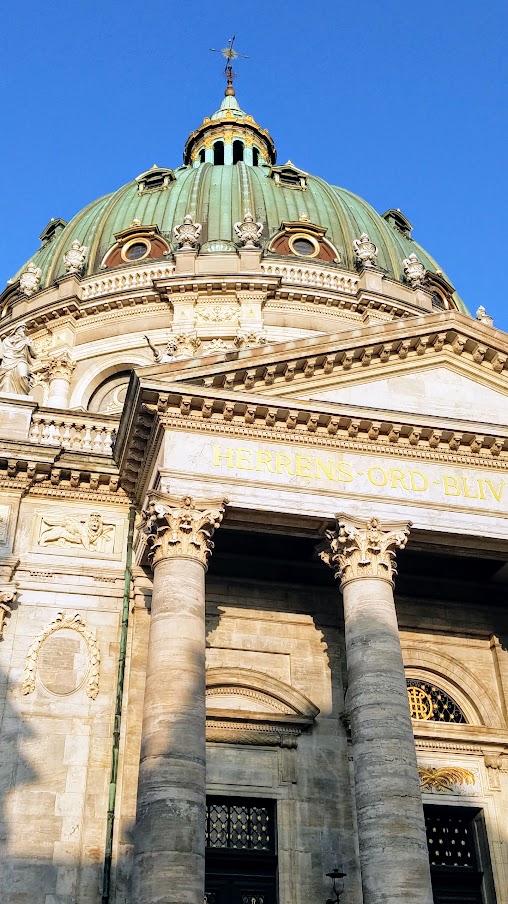
Nyhavn
Walk another block or so south from Amalienborg and you are at the iconic harbor area of Nyhavn, recognizable for its colored buildings and boats, including historical ships. There are many canal boat tours on modern boats available and there are many restaurants with outdoor seating here so you can eat and take in the views. The buildings here were brothels and homes – the oldest house along these rows (No. 9) dates from 1681, and look for No. 20 , 67 which marks houses where Hans Christian Andersen lived.


I came on a weekday so no one seemed interested in brunch – it was more busy on Saturday when I came by again. The dining areas did look cute, with some even supplied with blankets in case you feel a bit chilled. In general I saw a lot of restaurants overall that had al fresco dining offering blankets all over Copenhagen.



If you walk to the other east end, you’ll find a bridge with lots of love locks – apparently this is a relatively new location as originally most lovers were symbolizing their love at another pedestrian bridge at Bryggebroen so perhaps there are more locks to see there – I did not go find out.


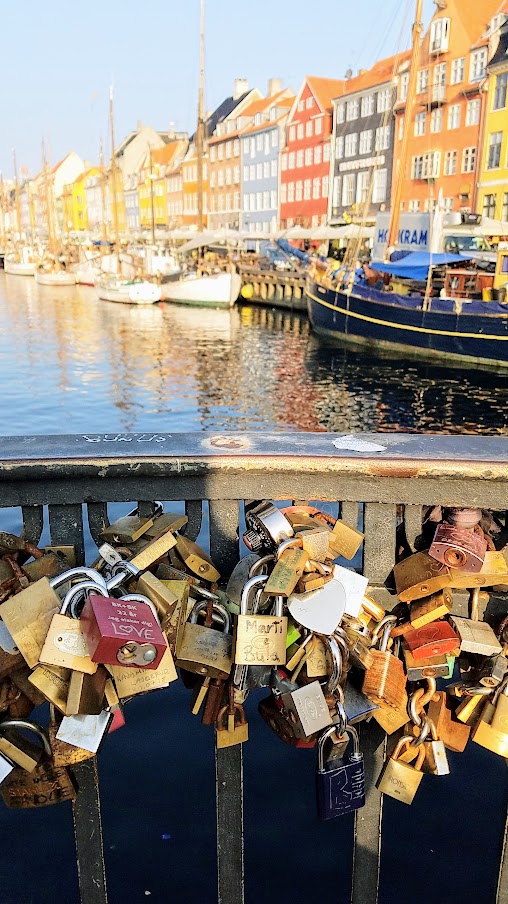
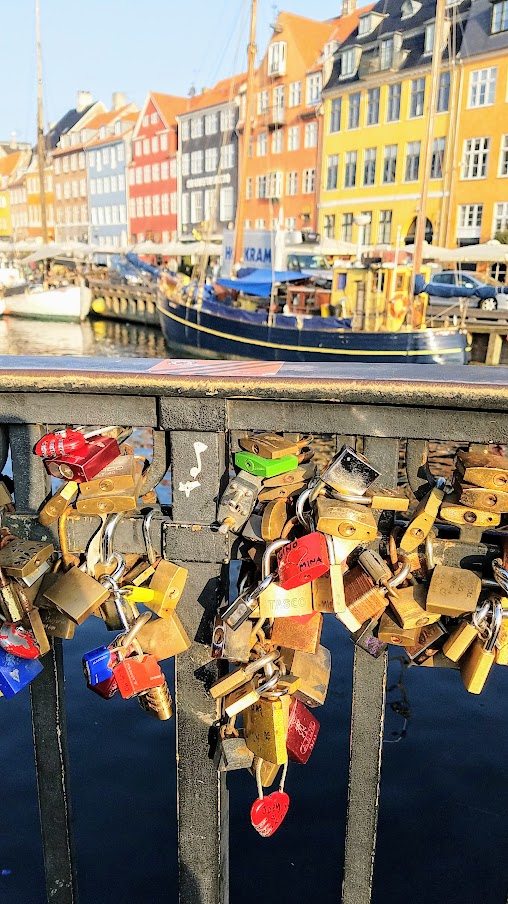

A few more blocks away is the Royal Danish Theater and although the current building is from 1874, the royal theater has been located here since 1748, which included even back then schooling for ballet and vocal opera and later a drama school. They have guided tours available in English, but I only passed by and admired the building.


Museums with Free Days
The other thing I recommend is looking up when are the free days at various museums to take advantage of visiting on those days. This worked out twice in my favor, where I visited the sculpture museums of Ny Carlsberg Glyptotek, free on Tuesdays and then Thorvaldsen’s Museum which is free on Wednesdays. I will have separate detailed posts on both these museums upcoming, but here’s a hint of what you can find at each of those museums to give you a taste.

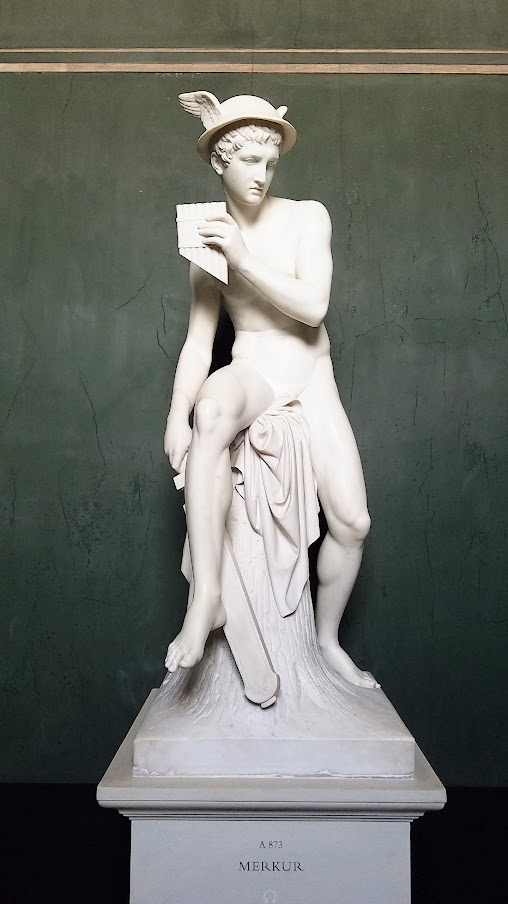
Finally, you might also want to look into the free walking tours – they hope for a tip at the end so it’s not 100% free if you are a decent person, but it still may be worthwhile. I used guidebooks and online to do my own walking tours, but I did consider joining one just to get more local insights and stories.
What are some additional tips for free things to do in Copenhagen, or that you use while traveling?
More from my adventures in Copenhagen (will be linked once posts are live)
- Restaurant Krebsegaarden
- Lunch at Restaurant Palaegade
- Free things to do in Copenhagen
- Lunch at Geranium
- Ny Carlsberg Glyptotek versus Thorvaldsen’s Museum
- The food market of Reffen
- Visiting Rosenborg Castle
- Visiting Church of our Savior and Tivoli







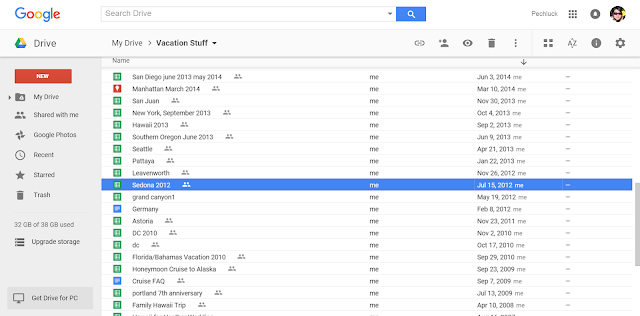
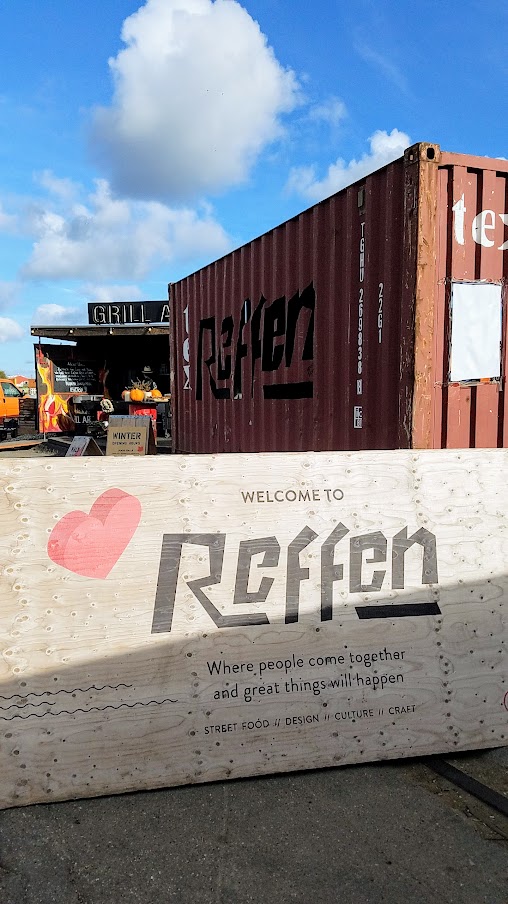



It’s such a stunning and unique location! I love this list of free things to do in Copenhagen.